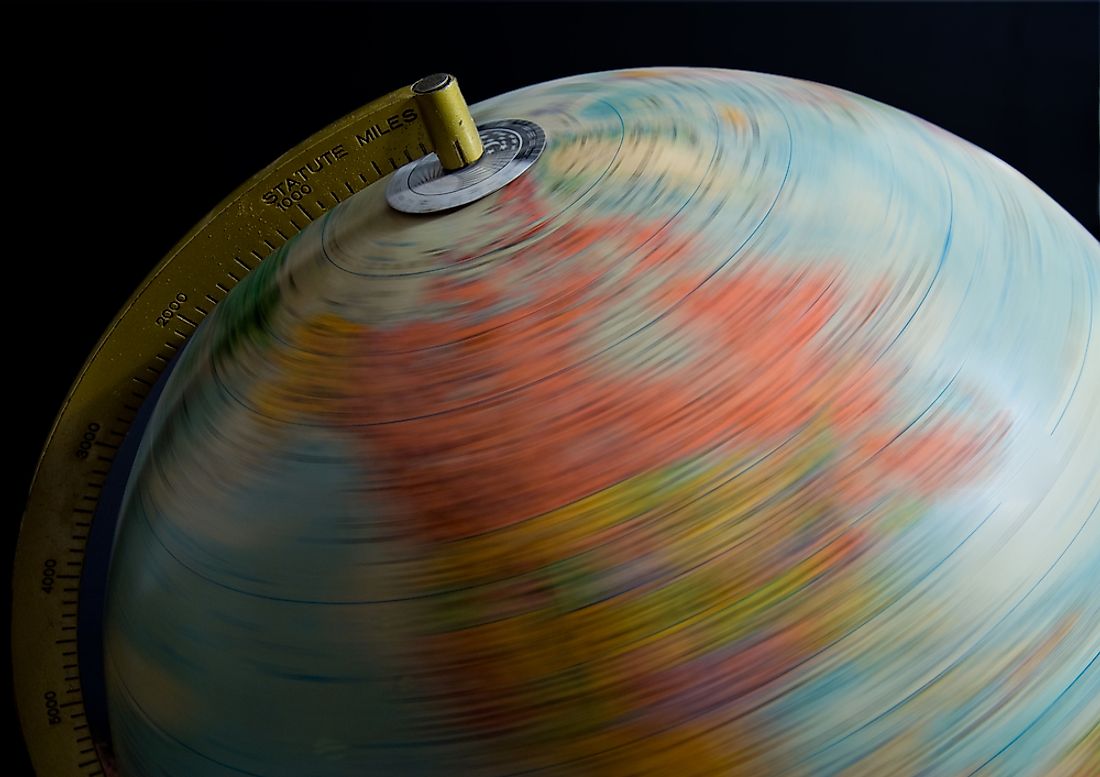How Fast Does the Earth Spin?

The Earth spins on its axis on a daily basis in an eastward direction. One complete rotation of the earth along its axis takes 24 hours, which in turn leads to day and night. The length of the day and night is different during different times of the year due to a number of factors such as the tidal effects caused by the moon. Aside from spinning on its axis, the Earth also revolves around the sun, which takes a whole year (365 days).
Speed at the Equator
The spinning of the Earth depends on the latitude of the Earth. At the equator, the Earth spins at a speed of about 1,000 miles per hour. As the location approaches the poles, then the speed reduces as the distance required to spin is also reduced. In other words, the equator region takes longer to spin completely compared to the polar regions, which have less circumference. As such, the region around the equator has to spin faster. Human beings are unable to perceive this spinning physically because of the gravity that keeps them grounded. One of the perceptions of this movement is the change in the time between day and night.
These figures can be confirmed by looking at the figures from NASA, which states that the equator has a circumference of about 24,898 miles. Since the equator has to cover this distance within 24 hours, then the speed of the earth is 1,037 miles per hour (distance divided by time). At latitude 45 degrees, the speed can be calculated by multiplying the cosine of the latitude by the speed at the equator. Since 0.707 is the cosine of 45, then the earth spins at a speed of 0.707 multiplied by 1037, which produces 733 miles per hour.
Since the earth spins at such a massive speed at the equator, space agencies usually prefer to use this speed to maximum effect. Missions to space are usually launched around the equator. The reason for this is that the rockets get a substantial boost in speed due to the spinning. A good example of this is the launching of space rockets in Florida by the International Space Station.
According to NASA, the likelihood of the Earth stopping its spinning on its axis is almost zero. In theory, however, if the Earth were to stop spinning, then the atmosphere would still be moving at the original speed. This speed would mean that everything on Earth would be swept in a massive maelstrom.
Speed Around the Sun
The journey around the sun requires the Earth to move a whopping 600 million miles. Since the distance required to revolve around the sun is considerably greater than that covered during spinning, the Earth revolves much faster as well. The speed of the Earth during its revolution is a whopping 66,000 miles per hour. In one day, the Earth covers around 1.6 million miles. To put this speed into perspective, if someone moves from Francisco to Washington DC at this speed, he or she would do it in only three minutes.











